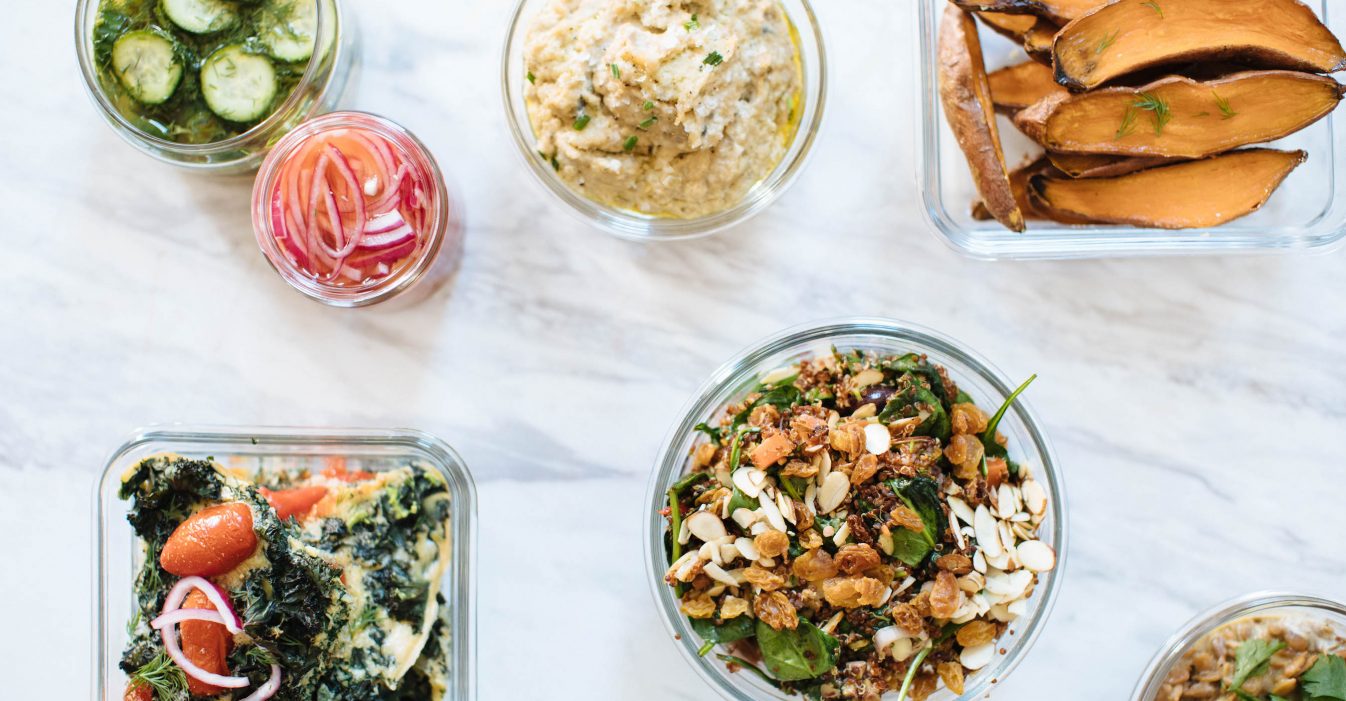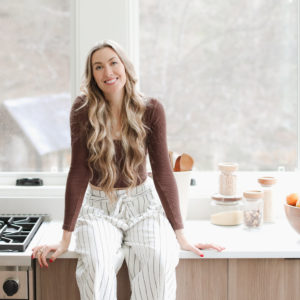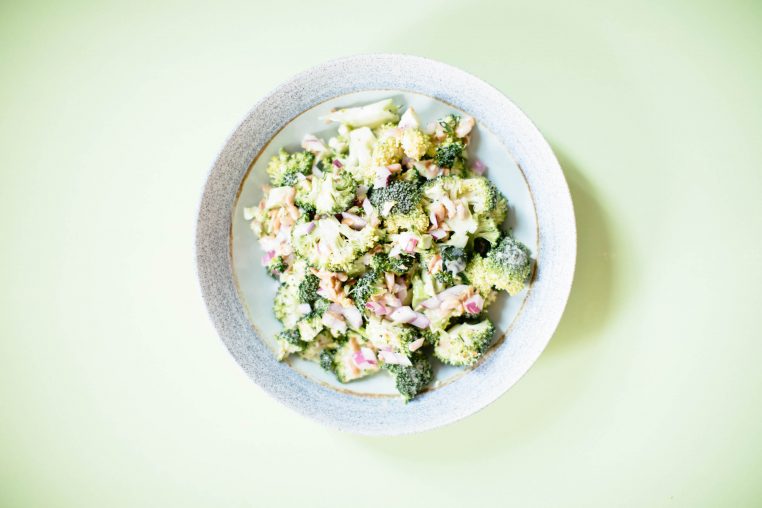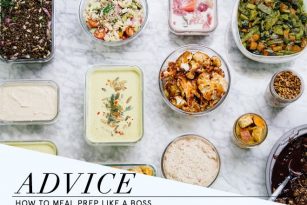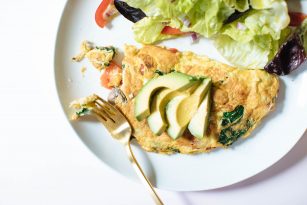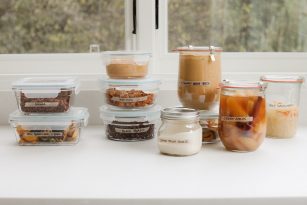Meal planning isn’t just for having healthy meals ready to go. Which is why this meal planning tip is all about reducing food waste.
Meal planning is one of several tools I personally use as a dietitian and with my clients to keep them on track with their health and nutrition goals. It’s a simple system, yet it can be overwhelming to start. I get it!
What Is Meal Planning
Meal planning is a system (there are many ways to do it) where you prepare meals in advance for the week ahead. I developed one of the leading and first dietitian-approved and dietitian-created programs called the Master Meal Planning program years ago, and we’ve helped thousands make cooking and healthy eating simple.
I wanted to share some lessons from our program and how you can apply it to your life during a busy holiday season and develop the skills and expertise to successfully meal plan for life!
Cooking for your health
You know all those amazing food blogs out there, the dozen Pinterest boards you have created or recipes bookmarked or stacks of cookbooks in the kitchen? Well, how many of those recipes have you actually made? And on top of that, do you try to make new recipes every day of the week?
I’m guilty of this too. I have so many Pinterest boards and recipes bookmarked, yet never seem to plan ahead to make them.
My guess is most likely you’re not making those recipes every week, and if you did, that would actually be a lot of cooking! A lot of time, energy, and money cooking new recipes each day, all the time. Trust me, that was my first experience with meal planning before I found out that it didn’t work for me, my schedule, or my budget.
It wasn’t just me who found challenges following meal planning frameworks like this — I’ve had clients and friends fail at meal planning before too. What I kept finding, it was because they had a hard time sticking to it, it felt like an all or nothing process, they felt like they did it “wrong” or had the pressure to do it perfectly every time, and it didn’t get the result they wanted — to feel great and support their long-term health habits!
I know, it’s easier said than done. It can be overwhelming too, especially with the world of food and nutrition blogs — most of those stunning recipes you see online or on social media are created by people to get more likes, more pins, more blog traffic and are developed by people who don’t have an education or knowledge in nutrition, health, or science to make those recipes for your long-term health in mind.
Yes, they look stunning. They might make you feel inspired, and that is amazing! But I’ve had so many clients who make recipes only to find they either are loaded with sugar, lacking whole foods, or don’t turn out like the recipe is supposed to leaving them frustrated.
Most of those recipes aren’t designed to be healthy for you long-term. As a Dietitian, all my recipes since 2013 have always been curated and purposefully developed to cultivate a healthier relationship to food while nourishing your body! All our recipes use nutrient-dense ingredients and in ways that make sense for the body to better absorb and utilize the nutrients.
Sometimes we add fancy things in there to switch it up, but at its core, it’s really simple whole food.
Reducing food waste
A staggering statistic from the Environmental Protection Agency (EPA) about the amount of waste produced during the holiday is often shared this time of year.
The original 2006 report, though outdated now, warns us that the US usually increases 25% between Thanksgiving and New Year’s Day to 1 million tons. (1) It’s great to see an increase in awareness over the past decade since the holidays can easily be a time of excess of food preparation, paper, and packaging materials for all of us!
It’s not just around the holidays either. It’s something we can all work to improve year-round. There are many ways we can actively and consciously reduce food waste, but a simple strategy is meal planning.
Reducing food waste could look like purchasing less food each week because you have a pantry stocked with bulk items, making the food you purchase each week more efficient. Efficient in the manner that you’ll consume it all before the end of the week because you have a plan to follow and portions planned ahead of time (i.e. meal planning!).
What Are Rotations?
Onto the meal planning tip that reduces food waste! A rotation is a week’s worth of 3-5 recipes you use for one week, for breakfast, lunch, and dinner then switch it out the following week and repeat.
This concept can not only help you focus on just making a couple key recipes a week, but it will also help to make healthy eating so simple and ensure that you’re nourishing your body with nutrient-dense recipes, especially if those are NS recipes which are all created with your health in mind!
For example, let’s say you have an oatmeal porridge recipe for breakfast and you eat that daily for one week, you’ll have peace of mind knowing breakfast is already taken care of and figured out! The same with your lunch and dinner.
If you think you’ll get bored eating this way, trust me, you won’t! There are so many small tweaks you’ll learn in our next class, that’ll give variety in the simplest of ways to every meal you have. Not only that, remember that you’re switching up the recipes again in a matter of days!
Using rotations not only reduces the stress about thinking of what recipes to make, but it also saves you money because you’re purchasing only the food you need for those recipes.
Rotations also encourage you to add variety to your diet from week to week which increases the nutrient-density and nutrient-variety you’ll eat in the span of a month!
And if you have all those recipes bookmarked, cookbooks and Pinterest boards full of recipes you want to try, using rotations can also be a helpful tool for you to get organized and start chipping away at your recipe bucket list by adding one of those recipes in your rotations a week.
Recipes To Try Using Rotations
Breakfast
Lunch
Dinner
Meal Planning Can Be Simple
If you’re interested in learning how to meal plan, in a simple and healthy way, then check out my free 4-class series on meal planning — it’s a free video course with printable materials for you to use in real life! Think of it as a mini-coaching session with me, your personal nutritionist teaching you about meal planning.
Join for the free 4-class Introduction To Meal Planning course here!
And if you want even more articles to read about meal planning, I think you’ll love this one on staying inspired by adding variety to meal planning, why the weekend can be the best time to meal plan, and 5 tips to make meal planning work for you.
Bottom Line:
A rotation is a week’s worth of 3-5 recipes you use for one week, for breakfast, lunch, and dinner then switch it out the following week and repeat!

